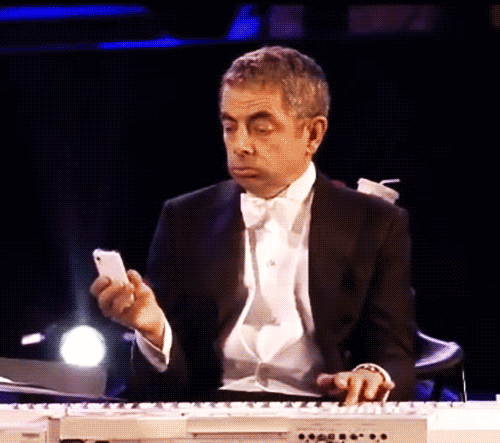-
Posts
81 -
Joined
-
Last visited
-
Days Won
1
Everything posted by Pando
-
People with more birthdays tend to live longer.
-
The music is strong in his family. His father had it, his grandfather had it, he has it, and his... brothers have it.
-
Measures 28 and 29 should be octave lower (along with the A at the end of 27).
-
Typical orchestra is 80-100 individual players, separated to instrument groups that further play divisi (Flutes 1,2,3, Oboes 1,2,3, etc.), so that's 40-45 tracks of music right there. Each of them may have multiple articulations that I'm also separating to different tracks (I don't like using keyswitches), so before you know it, you'll have hundreds of them. There are composers out there that have more than a thousand tracks in their templates, so a few hundred isn't really that much.
-
ASIO interface is fast enough on a modern computer to allow real-time live playing on the keyboard (latency ~2 to 5ms). I made a few mockups of JW's music, and the tracks are typically played in live in real time on the keyboard, one-by-one. Some faster parts might be sequenced if they're unplayable or precision is needed, but usually not. I typically load the reference track and make a tempo map before I start recording anything, and sometimes I play an instrument against the reference track to get a correct feel and when other tracks haven't been recorded yet. Mod wheel is used for dynamics and not too much post-editing is needed. If anything needs to be changed, I usually just re-record the part until I get it right. Due to the number of articulations and the size of the orchestra, it does take a long time to get good results. Too long for me to crank these out on a regular basis. The Speeder Chase track below uses something like 250 tracks and took weeks (not full time of course). Enjoy!
-
It was interesting to create that mockup, since I had no recorded reference material to compare it against. What you hear is just my interpretation from the sheet music alone. I had to pretend to be a conductor while making it and discover the instrument balance that would make sense as laid down the tracks. But I could be completely off in some areas, so it would be really cool to find out if they actually recorded this and be able to hear it like the composer intended. The recording is also a bit too quiet; I might go back and remaster it with proper volume. The 1M6 Seeing A Mother... sheet would also be great to hear in a mockup if it contains the same theme!
-
Not really. Left hand is just arpeggios (4 notes up and 4 down). To make octave transitions properly, keep your left thumb on a white key. The main melody is played by the pinky finger in your right hand, with the other two notes in the triplet played by the index finger (mostly) and thumb. Coordination in the two hands is the biggest challenge as you have 16th notes in left hand and triplets in the right. Damn, I need to get back in shape to play this...
-
Just the piano section into the End Credits. I did a search on the net at the time, most sheet music I found had many wrong notes. I don't know if there is real sheet music available for this or not. I learned it by just meticulous repetition, slowly, over some period of time. Eventually the fingers will remember, but you must resist the temptation of speeding up the tempo until you can play both hands without mistakes.
-
Ralph Grierson, with pictures and videos: L.A. Studio Legends: Ralph Grierson – The Legacy of John Williams The piece isn't particularly difficult to play for an accomplished pianist. Correct fingering is incredibly important. It wouldn't surprise me if he just sight-read this, as it's mostly arpeggios on the left hand. I've seen pianists sight read much harder pieces than that. I transcribed and learned to play this some 10+ years ago and even performed it live to an audience once or twice. But it took me months to learn, and it would take me a while to get back in shape to play it again without any fumbles.
-
Parts in that sound clip were taken from a full mockup I made (below). The original composition had even more measures that were edited out from the OST, but were actually present in the movie (listen to 0:10 and 0:16 mark). The mockup consists of all measures, and it's without the concert ending, which really doesn't belong there.
-

Official JWFan mock ups and fan-made recordings thread!
Pando replied to Jay's topic in General Discussion
No, BBCSO is their newer library but not as extensive and not sonically as good. Unlike the BBCSO, the older SSO was actually recorded at AIR Lyndhurst Hall, the same scoring hall where JW recorded Harry Potter. -

Official JWFan mock ups and fan-made recordings thread!
Pando replied to Jay's topic in General Discussion
Thanks! I'm using Spitfire Symphony Orchestra, Solo Strings, Studio Orchestra, together with SampleModeling Brass. -

Favorite short musical moments in Williams scores?
Pando replied to Balahkay's topic in JOHN WILLIAMS
Holy crap. Wookiees wearing gowns is the funniest thing I've seen here for a while. -
While it may seem to work (since there's action going on all the time), the original cue points don't really line up at all in that clip. In this trailer clip below you can see a bit how the original music fits the cues at various scenes in the beginning (like the string staccato at "they fly now"), and it's already cut short. It's possible that JW composed this music early on for a digital storyboard/animation, and they didn't end up shooting or using some scenes so they had to cut out the music as well (but I don't know the timeline what was done when). Movie is one thing, but the OST should have used the original music; I don't understand why they had to cut that up so much.
-

Official JWFan mock ups and fan-made recordings thread!
Pando replied to Jay's topic in General Discussion
The Speeder Chase as was originally composed before it was cut up. -
This thread is doomed!
-
-
Look for the HDMI port that has ARC (audio return channel). TVs usually have one of them. This is the one you connect to your receiver.
-

Do high-res audio sites like HD Tracks have digital watermarks?
Pando replied to Drew's topic in General Discussion
-

Do high-res audio sites like HD Tracks have digital watermarks?
Pando replied to Drew's topic in General Discussion
That's JW tweaking his modular synth.






